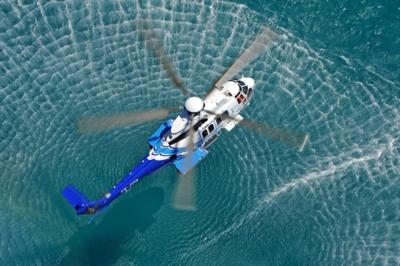Emergency AD# 2022-14-51 Requires One-Time Visual Inspections And, Depending On The Results, Accomplishing Additional Inspections
This emergency AD was prompted by a report of a cracked main rotor head (MRH) sleeve.

This emergency AD requires one-time visual inspections and, depending on the results, accomplishing additional inspections, repairing the MRH sleeve in accordance with a certain approval, and removing the MRH sleeve from service and installing an airworthy part. This emergency AD also prohibits installing an MRH sleeve unless certain inspections have been accomplished. This condition, if not addressed, could result in failure of an MRH sleeve, loss of a main rotor blade, and subsequent loss of the helicopter. The European Union Aviation Safety Agency (EASA), which is the Technical Agent for the Member States of the European Union, has issued EASA Emergency AD 2022-0130-E, dated June 30, 2022 (EASA AD 2022-0130-E), to correct an unsafe condition for Airbus Helicopters (AH), formerly Eurocopter, Model EC 225 LP helicopters. EASA advises of a crack in an MRH sleeve that investigation determined was a fatigue crack that had initiated from a corrosion pit located in an area with chipped paint. Accordingly,
EASA AD 2022-0130-E requires initial one-time detailed visual inspections of MRH sleeve part number (P/N) 332A31-3071-00 and depending on the results, follow-on repetitive inspections and corrective actions.

Emergency AD Requirements: This emergency AD requires visually inspecting the “Specific area” of each MRH sleeve P/N332A31-3071-00 for flaking and paint touch-up. If there is any flaking or paint touch-up, this emergency AD requires visually inspecting the “Specific area” of the MRH sleeve for a crack.
As a result of the visual inspection, if there is a crack, this emergency AD requires removing the MRH sleeve from service and installing an airworthy part. If there is not a crack, this emergency AD requires an inspector with a certain qualification using high-frequency eddy current (HFEC) to inspect the “Specific area” of the MRH sleeve for a crack.
As a result of the HFEC, if there is a crack, this emergency AD requires removing the MRH sleeve from service and installing an airworthy part. If there is not a crack, this emergency AD requires chemically stripping and fluorescent penetrant inspecting (FPI) the “Specific area” of the MRH sleeve for corrosion.
As a result of the FPI, if there is corrosion, this emergency AD requires removing the corrosion by hand and repeating the FPI of each affected area to inspect for corrosion, and depending on the subsequent results, removing the MRH sleeve from service and installing an airworthy part; or drying the MRH sleeve, applying a protective coating, primer, and paint protection, and having an inspector with a certain qualification using HFEC repetitively inspect the “Specific area” of the MRH sleeve for a crack. If there is a crack, this emergency AD requires removing the MRH sleeve from service and installing an airworthy part.However, if the corrosion cannot be removed by hand, this emergency AD requires removing the MRH sleeve from service and installing an airworthy part or repairing the MRH sleeve in accordance with a certain approved method.
As a result of the first FPI,if there is no corrosion, this emergency AD requires applying primer and paint protection.As an option to the first FPI and its follow-on actions, if there is not a crack, this emergency AD allows applying primer and paint protection or, for any area swith flaking paint, applying only varnish instead of primer and paint protection on each flaking paint area; and having an inspector with a certain qualification using HFEC to repetitively inspect the “Specific area” of the MRH sleeve for a crack. If there is a crack, this emergency AD requires removing the MRH sleeve from service and installing an airworthy part. This emergency AD also prohibits installing an MRH sleeve unless specified one-time visual inspections have been accomplished.
 Aero-News: Quote of the Day (11.17.25)
Aero-News: Quote of the Day (11.17.25) ANN's Daily Aero-Term (11.17.25): NonDirectional Beacon
ANN's Daily Aero-Term (11.17.25): NonDirectional Beacon NTSB Final Report: Fred L Wellman CH 750 Cruzer
NTSB Final Report: Fred L Wellman CH 750 Cruzer ANN's Daily Aero-Linx (11.17.25)
ANN's Daily Aero-Linx (11.17.25) Airborne-NextGen 11.11.25: Archer Buys Hawthorne, Joby Conforms, Stranded Astros
Airborne-NextGen 11.11.25: Archer Buys Hawthorne, Joby Conforms, Stranded Astros




